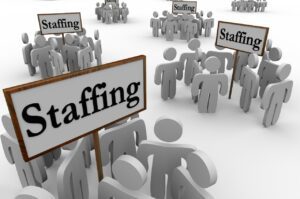The Employment Insurance (EI) Program of Canada gives temporary financial support for unemployed individuals while they’re looking for jobs or honing their skills.
This employment insurance system also comes with special benefits given to workers who take leave due to life events. Some include pregnancy, illness, attending to a newborn child, a sick family member, or a critically ill or injured individual.
Those who can receive EI benefits are workers who have paid premiums in the previous year and fulfilled entitlement conditions and other qualifications. Self-employed individuals may also avail of this program and get special benefits. Read this blog post to know more about the Employment Insurance Program provided by the Government of Canada.
The Role of Canada Employment Insurance Commission
The CEIC is the overseer of the Employment Insurance Program. It’s a government agency that sets the annual premium rate of the said program. Other obligations of this agency are as follows:
- Provide prompt and accurate services and benefit payments to beneficiaries
- Help clients of the EI program throughout the entire process of the service delivery by:
- Giving information regarding benefits
- Answering the inquiries of clients
- Assisting employers
- Supervising client identification and authentication
- Processing benefit claims and providing avenues for appeals
- Detecting and preventing abuse and fraud, such as social insurance number sin validation problems
EI Regular Benefits
The EI program gives benefits to workers who have lost their job through a mass layoff, seasonal layoff, or shortage of work. Such circumstances are not their fault, and they’re given income support, training, or assistance while they’re finding employment.
Make sure to send your benefit claim application immediately after you lose your job. When your application is delayed for more than four weeks after your last day of employment, chances are you won’t get your benefits. Workers who don’t have their Record of Employment (ROE) yet can also send their benefit claim application.
EI Benefits for Self-Employed Individuals
Individuals who own a business or control over 40% of a company’s shares can also get special benefits 12 months after registration. There are six types of special benefits described in the Employment Insurance Program, namely:
- Maternity
- Parental
- Sickness benefits
- Family caregiving benefits for children
- Family caregiver benefits for adults
- Compassionate care
You can receive financial assistance of approximately 55% of your business earnings whenever you need to take leave from your business for specific reasons. Some qualifying reasons include caring for your children, other family members, or a person who needs it.
Here are the eligibility requirements you have to meet to get the special benefits under this self-employed program.
- The candidate must be a Canadian citizen.
- You must be registered for at least 12 months.
- You’re not spending over 40% of your time on your business for at least one week.
- You have earned a minimum amount of business earnings between January 1 and December 31 of the year before submitting your benefits application.
Entrepreneurs who also work as an employee can increase their benefit rate by combining the insurable earnings from both their business and employment. The number of weeks of benefits and the maximum benefit rate they can receive remains the same.
EI Benefits for Teachers
Teachers can also receive Employment Insurance benefits. However, some variations apply due to the contractual arrangements.
- Teachers who are under an existing contract in pre-school, elementary, intermediate, and secondary schools can’t get regular benefits during non-teaching periods until the contract expires. However, they may receive parental, maternity, family caregiving, and compassionate care benefits.
- The same regular benefit rules will apply to teaching professionals working in community colleges and universities.
- Substitute or casual teachers can get regular benefits during non-teaching periods.
If you’re working and receiving regular benefits simultaneously, you’re entitled to a specific amount without having your benefits reduced. In August 2018, however, there are changes to the usual weekly earnings a beneficiary can get. You better contact Service Canada for more information.
Takeaway
The Employment Insurance Program is a great thing for workers in Canada. It has benefit packages for qualifying workers who have lost their jobs or have taken leave from their respective employment or business. Learn more about this program by contacting the Canada Employment Insurance Commission.





